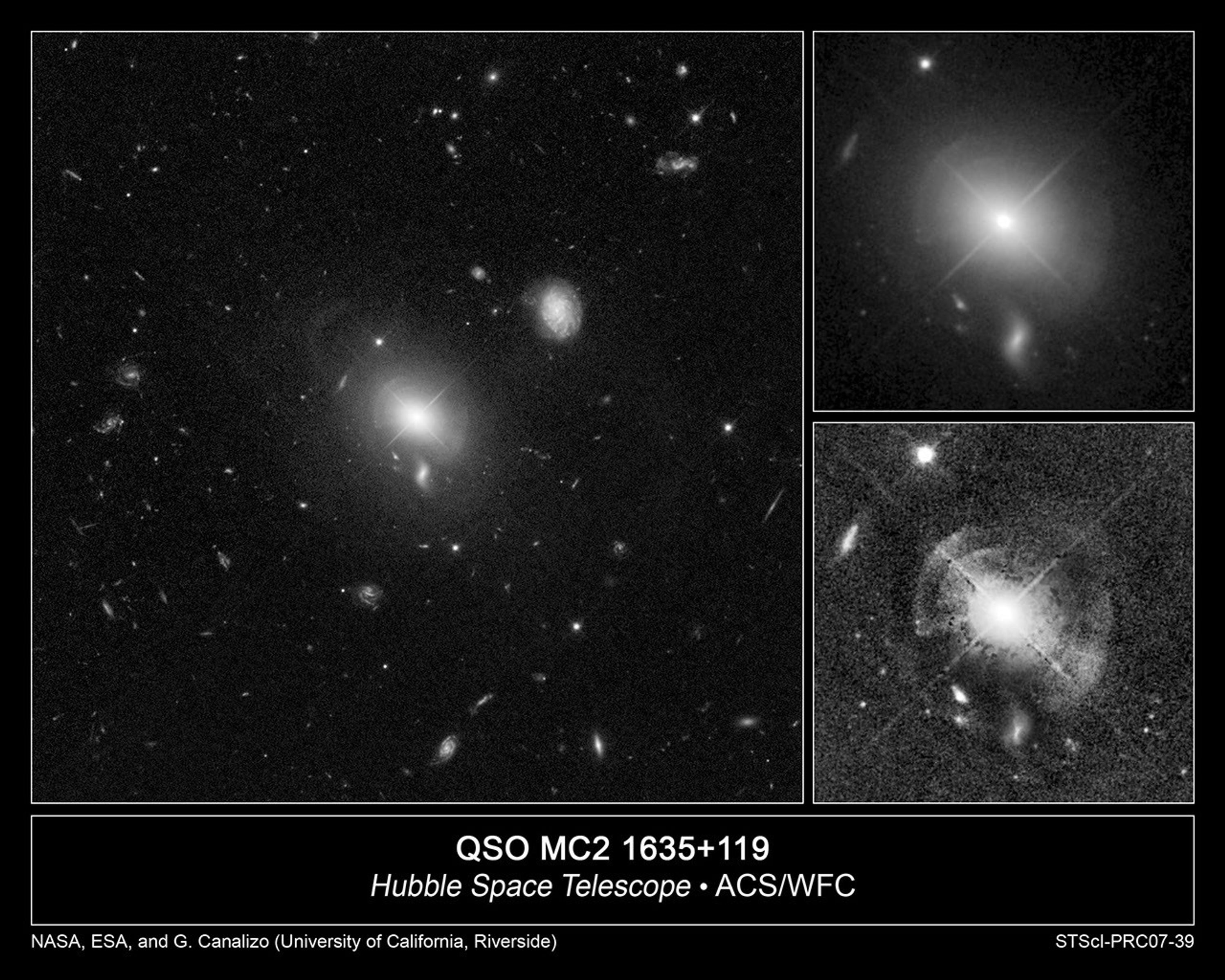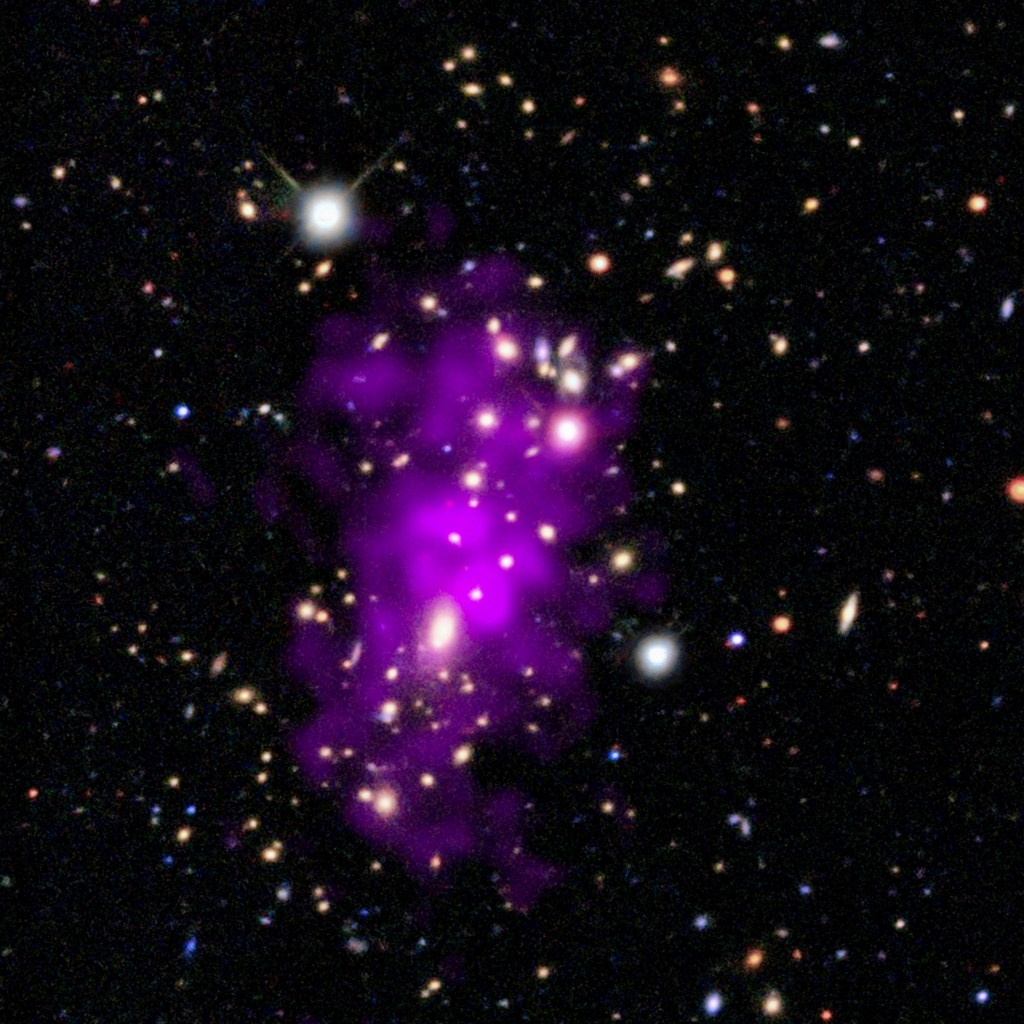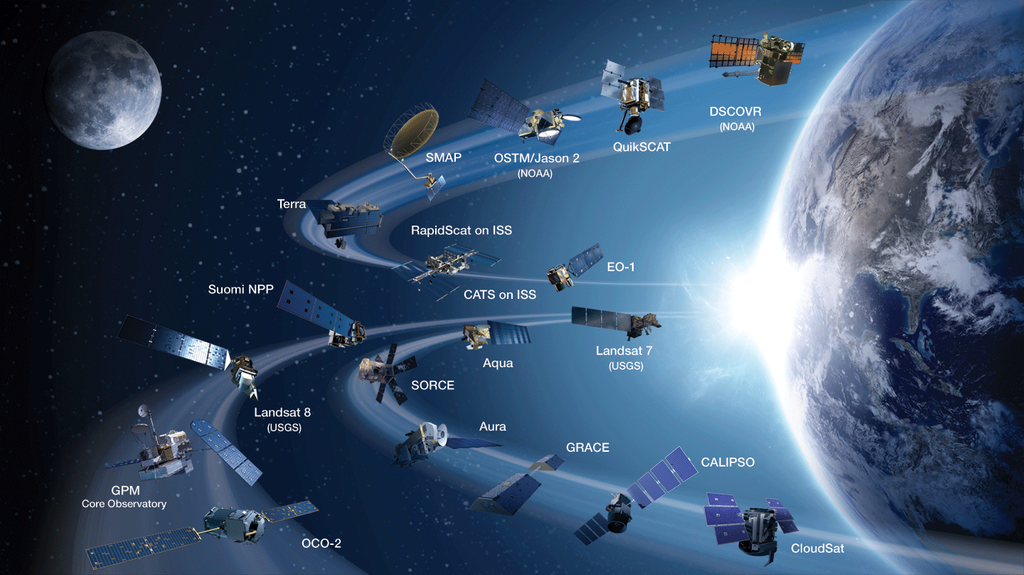1 min read
Shell Formation in a Galaxy Merger
This simulation shows the formation of shells in a head-on collision of two elliptical galaxies of different masses. A giant galaxy weighing 300 billion solar masses [left panel] collides with a galaxy that is 10 times less massive, which is coming from the right.
The panel at right shows a close-up of the interaction. The smaller galaxy is disrupted by tidal forces during the collision. Some of its stars escape far away. Others, however, get trapped and begin to oscillate in the giant galaxy's gravitational field, creating outward- moving density waves that form the shells. The shell structure, barely visible in the left panel, is clearly seen in the right panel. Each panel measures 326,000 light-years by 326,000 light-years. The rapidly changing numbers in the left panel notes the time in millions of years since the beginning of the collision.
The simulation is based on a technique pioneered by T. Quinn (University of Washington) and L. Hernquist (University of California/Lick Observatory) for head-on collisions of unequal-mass galaxies.
- Release DateOctober 25, 2007
- Science ReleaseHubble Spies Shells of Sparkling Stars Around Quasar
- CreditB. Jungwiert, G. Canalizo, and N. Bennert (University of California, Riverside), I. Ebrová (Astronomical Institute, Academy of Sciences of the Czech Republic, Prague)
Related Images & Videos

Shells of Stars Ring Quasar in Giant Elliptical Galaxy
These sharp images taken with NASA's Hubble Space Telescope reveal at least five shells of stars surrounding a brilliant quasar at the heart of a giant elliptical galaxy. The image at left shows the quasar, known as MC2 1635+119, and its host galaxy [center] against a backdrop...
Share
Details
Claire Andreoli
NASA’s Goddard Space Flight Center
Greenbelt, Maryland
claire.andreoli@nasa.gov

































